Snow Avalanche Dynamics I
Systematic observations of snow avalanche have carried out in the Shiai-dani, Kurobe Canyon since 1989 and Ryggfonn, Norway from 1990-1992, in order to investigate the dynamics and the detailed structure of snow avalanches. Velocities of the lower flowing component were calculated by differencing measurement of impact pressure. A new device to measure static pressures was used to estimate velocities in the snow cloud that develops above the flowing component of avalanches. Both recordings of flowing part and snow cloud changed with a similar trend and suggest a close interaction between the two layers. In addition, the velocity showed a periodic change. Power spectrum analysis of the impact pressure and the static pressure depression showed a strong peak at a frequency between 4 and 6 Hz, which might imply the existence of either ordered structure or a series of surges in the flow.

Snow avalanche observations in the Shiai-dani, Kurobe Canyon
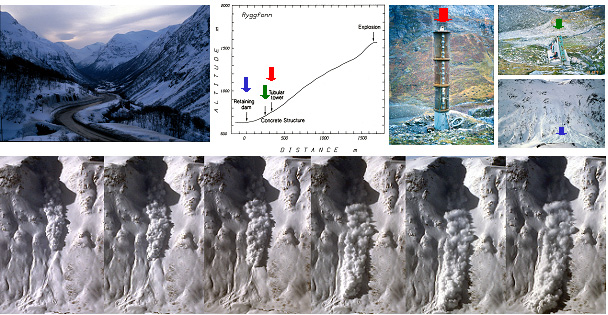
Full scale avalanche experiment in Ryggfonn, Norway
Snow Avalanche Dynamics II
Three dimensional granular flow experiments were carried out on a ski jump with 500,000 ping-pong balls. Since the air drag was a large effect, the flow arrived at a steady state within a short distance. The terminal velocities attained showed a remarkable increase with the number of released balls. In addition, the flow formed a distinct head and tail structure, which has often been observed in large-scale geophysical flows in nature. Similarity analysis is used to show that the experiment corresponds to a natural powder snow avalanche that runs for several kilometers. Computer simulation of 3-dimensional, inhomogeneous two-phase flows that uses the DEM for the particles and the Reynolds-averaged Novier Stokes equations for the fluid are currently in progress.
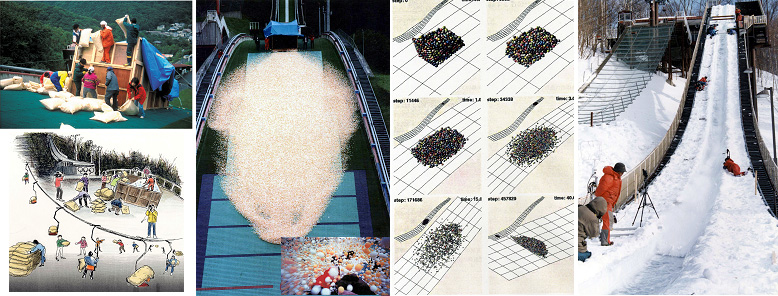
Avalanche Experiments at Ski jump
Development of continuum snow avalanche model
From the hazard-prevention point of view, there is an immense requirement to reasonably simulate the movement of snow avalanche in a realistic way. We developed a system composed by not only laboratory experiments but also numerical simulations for investigating the practical internal friction. In this system, we perform laboratory experiments using natural snow particles and run numerical simulations with continum flow model which uses Coulomb type friction low. Then we analyze the morphologic patterns by comparing those of laboratory experiments and numerical simulations.
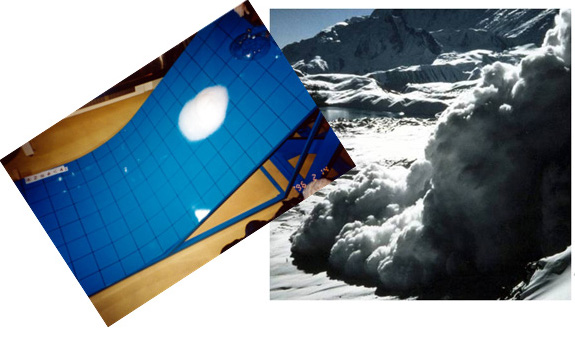 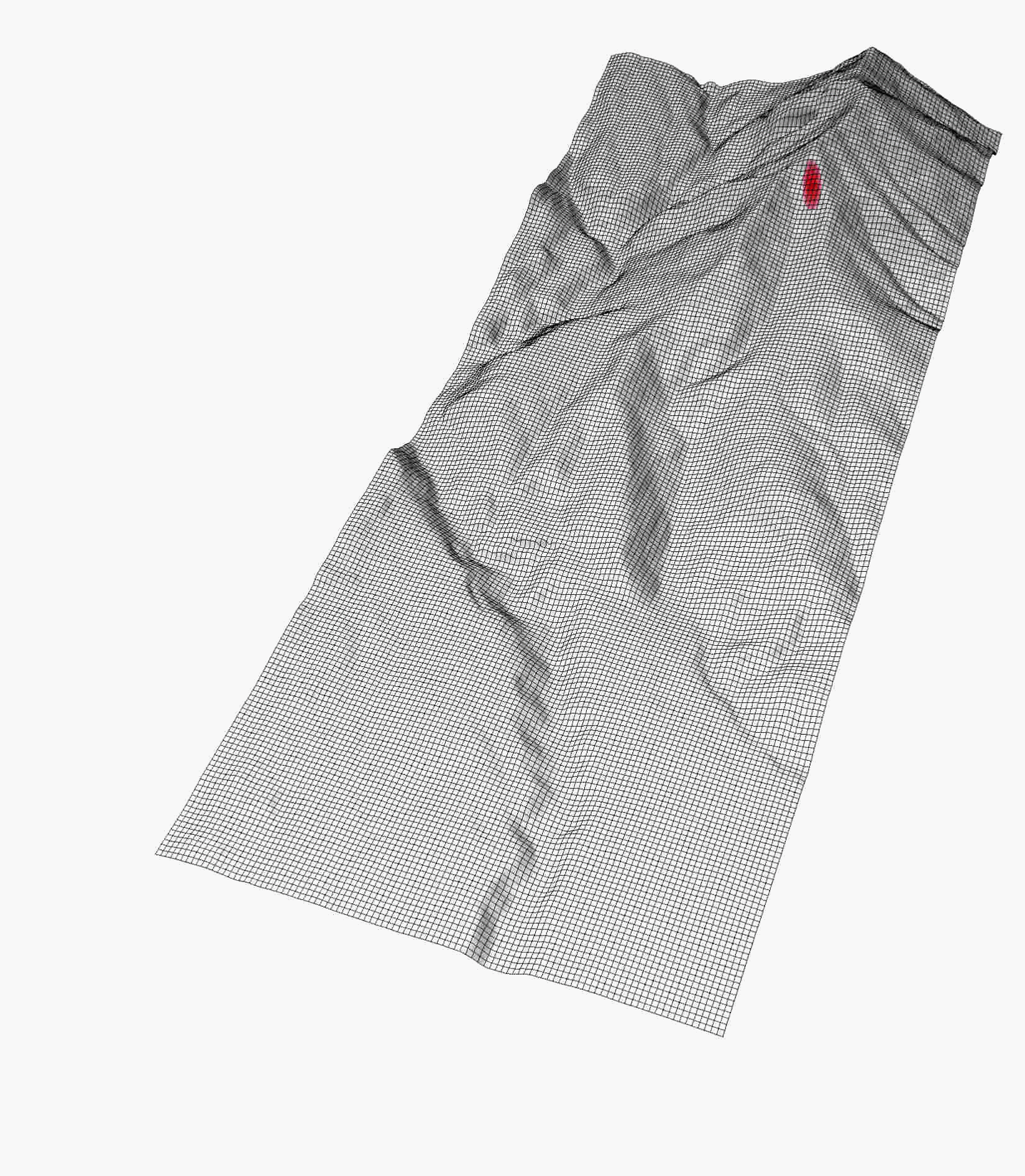
Snow flow experiments in a cold room and a development of continuum snow avalanche model
Snow avalanche warning
There have been eight snow avalanche fatalities for the past 15 years in Neseko, a ski resort in Hokkaido, the northernmost main island of Japan. We have started to develop an avalanche warning system in Niseko area. The system involves a numerical snow cover model SNOWPACK and collecting snow and meteorological data.
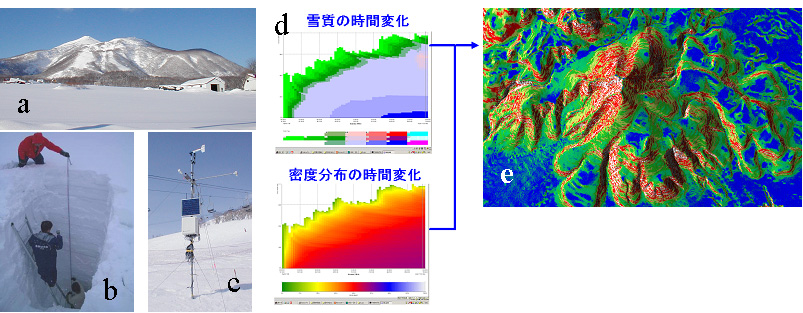
a: Niseko Annupli (1308m), b: Snow pit observations, c: Automatic weather station, d: Output of SNOWPACK model, e: Stability Index distribution)
Seismic and infrasonic signals associated with snow avalanche movement
Seismograph equipped in a heavy snowy area sometimes record the ground vibration due to the passage of snow avalanche, Some observations and their analysis have been carried out dealing with the link among seismic and infrasonic signals and avalanche flows. The seismic recordings during the passage of avalanches showed a specific spindle pattern, which was quite different from the one of natural earthquakes. The general trend strongly depended on the topographic features of the avalanche path, and as a result we could estimate avalanche velocity. The running power spectrum showed a meaningful shift of the dominant peak from the front to the rear part of the flow.

Records of ground vibrations(upper left)and infrasonic waves(upper right)and their running spectrum(lower)
Measurements and numerical simulations of snow-particle saltation
Blowing snow is highly significant for both engineering and climatological reasons. Drifting snow reduces road visibility and occasionally causes fatal traffic accidents. The redistribution of snow by the wind causes locally increased snow deposition in leeward slopes, which has a crucial influence on avalanche danger. Wind-tunnel experiments were carried out to measure the trajectories of saltation snow particles with varying friction velocity and they agreed reasonably with the computations. Shear stress acting on the snow surface, measured directly with a newly developed drag meter system, revealed that shear stress increased with the development of saltation, which supports Owen’s hypothesis that the saltation layer acts as an increased roughness to the flow above the saltation layer.
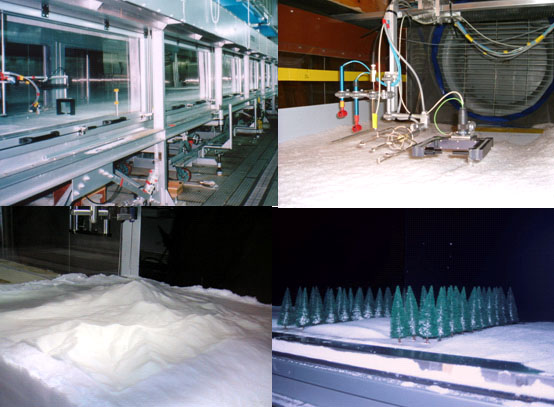
Cold Wind Tunnel(Shinjyo, National Research Institute for Earth Science and Disaster Prevention (upper left) and Swiss Federal Institute for Snow and Snow Svalanche Research (upper right)), and measurements of wind (lower left), speed and snow drift formation (lower right)
Blowing snow observations at Mizuho station, Antarctica
On the Antarctic ice sheet, strong katabatic winds blow throughout the year and a large but unknown fraction of the snow which falls on it is removed continuously. This constitutes a significant factor in mass and energy balance and is all the more important when predicting the likely effects of global climate change. On the other hand, Antarctica is an ideal site for evaluating the theory of blowing snow as well, because its vastly flat surface and steady katabatic wind regime cause flow both timely and spatially equilibrium on the surface. Blowing snow observations were carried out at Mizuho station, Antarctica in 2000. A blowing snow observation system including snow particle counters (SPC) which can sense not only the number of snow particles but also their diameters, was situated on a 30 m tower. Measurements were compared with a blowing snow model which took into account all physical processes including aerodynamic entrainment, grain/bed collisions, wind modification, particle size distribution, and turbulent fluctuations on the particle trajectories. Simulated and measured results showed close agreement and the validity of the model was demonstrated.

Blowing snow observations at Mizuho station, Antarctica (JARE41)
Development of an Automatic Blowing Snow station
Nishimura and Nemoto (2005) carried out the blowing snow observations at Mizuho station, Antarctica in 2000 with the snow particle counters (SPC) that can sense not only the number of snow particles but also their diameters. SPC worked properly and the data obtained revealed profiles of mass flux and particle size distributions as a function of the friction velocity. However, the SPC requires rather high power supply and the data is stored in PC; it is not always suitable for the unmanned observations under the severe Antarctic conditions. Thus, we have developed a simpler device by measuring the attenuation of the light intensity, which strongly depends on the blowing snow flux. A small wind turbine and a cold-proof buttery were utilized as a power source. Firstly, its performance was tested with comparing the SPC in a cold wind tunnel system and it proved adequately fit for practical use by combining the output of the anemometer. In 2009/2010 winter, three systems have been set at Ishikari, Col du Lac Blanc in France, and S17 near Syowa station in Antarctica, and the tests are still continuing.
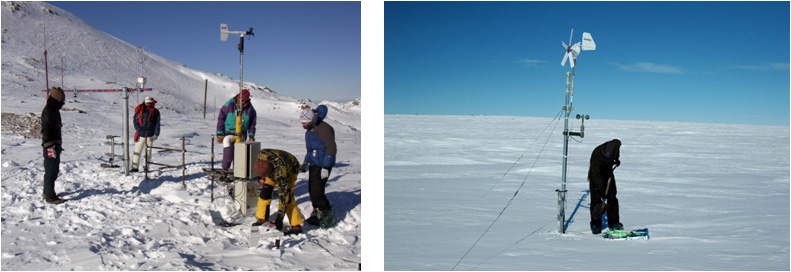
Automatic Blowing Snow station(Left: Col du Lac Blanc in France, Right: S17 in Antarctica)
Scaling properties of the turbulent wake from porous fences with a fractal configuration
The aim of this study is to compare the characteristics and scaling properties for wakes from fractal and non-fractal objects controlling for the effects of porosity and the average strut spacing by an appropriate design of the fences. This is of more than theoretical interest; porous fences are commonly used as a means of controlling the drifting of saltating or suspended particles, with this form of control used to stabilize sand dunes in aeolian environments
We analyse the turbulent wake shed from fences with varying porosity, number of struts and fractal dimension in a wind tunnel.

Fractal(lower two) and nonfractal fences (upper three), and measurements of wind speed, turbulent structures and snow drift
Glacier lake outburst floods in Nepal and Bhutan
Due to the global warming, the kingdom of Nepal has suffered serious flood caused by outburst of a glacier lake. It happened at least 14 times since 1960s, which corresponds to the frequency more than once every three years. The glacier lakes are formed on the glacier tongue of a debris-covered glacier and dammed up by a moraine. The moraine is fresh glacial deposit formed in the Little Ice Age and thus quite unstable. It tends to collapse easily.
Since 2009 'Study on GLOFs (Glacial Lake Outburst Floods) in the Bhutan Himalayas' has been started as one of the 'Science and Technology Research Partnership for Sustainable Development' programs sponsored by JST and JICA. The purpose of this research is to evaluate GLOFs’ hazard level in Bhutan for mitigation. Its primary focus is on Mangde Chu Valley, for which the GLOF hazard level isbelieved to be high but yet information for mitigation is lacking. On the basis of satellite data analysis and field survey, we will complete a flood hazard map for the region and provide information necessary for the construction of an early warning system. Throughout the project it is strongly emphasized that technology on GLOF hazard mitigation is transferred to local organizations.

UPPER: Glacier lake at Imja Glacier, Nepal (left), inudation flow analysis of GLOF(middle) and Punaka temple damaged by GLOF in 1994, Bhutan (right)
LOWER: Courtesy call on Minister of Economic (left) and on Minister of Home and Cultural Affairs(middle), and Kick-off meeting in Thimphu, Bhutan (right)
|

